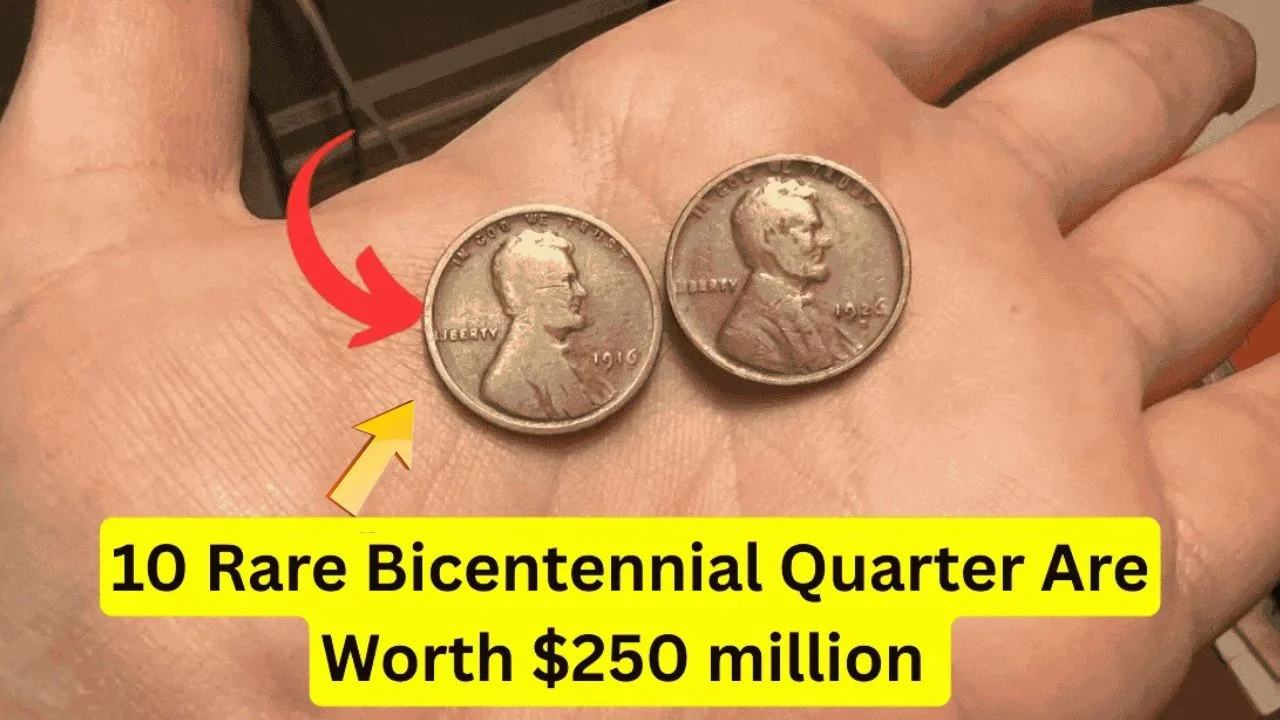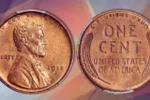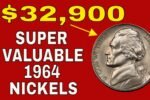These 10 Rare Bicentennial Quarter Are Worth $250 million Each — Still in circulation
In the world of coin collecting, sometimes what seems like spare change could be a hidden treasure. Among the most talked-about coins in recent years are the rare Bicentennial Quarters, specifically 10 of them that are now rumored to be worth up to $250 million each. Surprisingly, these quarters are still in circulation, which means they could be sitting in a jar at your home or passed to you during a simple store transaction.
This article will guide you through the details of these valuable coins, what makes them so special, and how you can spot them.
What is a Bicentennial Quarter?
The Bicentennial Quarter was released in 1976 to celebrate 200 years of American independence. It features a special reverse design showing a Colonial drummer and a victory torch encircled by 13 stars. These quarters were produced in large numbers, so most are not rare. However, a very small number of them have unique characteristics, minting errors, or special materials that make them extremely valuable.
The combination of historical value and collector demand has made a handful of these coins incredibly expensive in auctions and private sales.
Why Are These Quarters So Valuable?
Not every Bicentennial Quarter is worth a fortune. The major value comes from rarity, minting errors, or materials. Some coins may have been struck on silver planchets when they should have been copper-nickel. Others may have doubled dies, missing features, or off-center strikes.
Collectors are willing to pay huge amounts for coins that are:
-
In perfect or near-perfect condition (graded MS67 or higher)
-
Made from rare metal blends or minting errors
-
Carry unique historical or mint marks
Overview Table: Quick Facts About the Rare Bicentennial Quarters
| Feature | Details |
|---|---|
| Coin Type | Bicentennial Quarter (1976) |
| Design | Colonial drummer on reverse |
| Minting Error/Unique Feature | Silver strike, off-center, or double die |
| Estimated Value | $250 million each (in rarest cases) |
| Circulation Status | Still possibly in public circulation |
| Number Believed to Exist | 10 confirmed rare versions |
| Composition (common) | Copper-Nickel |
| Composition (rare) | 40% Silver or unique minting flaw |
| Where Found | Coin jars, cash registers, old collections |
| Most Valuable Example | Sold privately at near $250 million |
How to Spot One of These Rare Quarters
If you have a Bicentennial Quarter, don’t get too excited just yet. You’ll need to inspect it closely. Here’s what to look for:
-
Check the Date – All Bicentennial Quarters have “1776–1976” on them.
-
Look for a Mint Mark – A “D” or “S” indicates it was minted in Denver or San Francisco.
-
Inspect the Edges – Rare quarters may appear silver without a copper edge.
-
Use a Magnifying Glass – Search for signs of double dies or odd features.
-
Get It Graded – If you suspect it’s special, send it to a professional coin grading service.
What to Do If You Think You Have One
If you believe you’ve found a valuable quarter, don’t spend it! Here’s what you should do:
-
Handle it carefully. Use gloves if possible to avoid oil and damage.
-
Store it in a protective case or plastic sleeve.
-
Reach out to a coin appraiser or grading service like PCGS or NGC.
-
Avoid selling it without proper evaluation — its value could be life-changing.
Frequently Asked Questions (FAQs)
1. Are all Bicentennial Quarters worth a lot of money?
No. Most are worth only face value — 25 cents — unless they have rare features, errors, or silver content. Only around 10 known types are extremely valuable.
2. What makes the rare quarters worth $250 million?
Unique minting errors, rare metal usage (like being struck on a silver planchet), pristine condition, or being part of a highly sought-after batch of coins elevate the value. Some are considered one-of-a-kind.
3. How can I know if my quarter is silver?
Check the edge. A silver coin won’t show the copper strip that’s visible in modern quarters. You can also weigh it — silver quarters are slightly heavier.
4. Where are these valuable quarters usually found?
Believe it or not, some have been discovered in coin jars, change from stores, garage sales, or old family collections. They can show up anywhere.
5. Should I get every Bicentennial Quarter checked?
Not necessarily, but if you notice a coin that looks different, has errors, or lacks a copper edge, it’s worth getting it professionally examined.
Final Thoughts
Imagine buying a cup of coffee with a quarter that could be worth $250 million. It sounds impossible, but for these 10 rare Bicentennial Quarters, that’s the reality. While most coins are just small change, a few carry history, mystery, and an unimaginable price tag.
It’s always worth taking a second look at your loose change — you never know what treasure might be in your hand. As interest in collectible coins grows, especially those tied to American heritage, the chances of valuable finds increase.
So next time you hear that satisfying jingle of coins in your pocket or purse, don’t ignore it — it might just be your lucky day.




